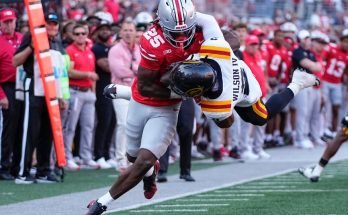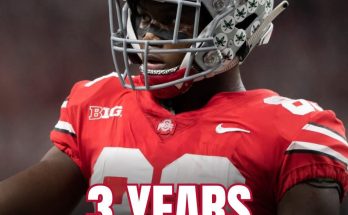In a stunning announcement that has reverberated throughout the basketball world, ESPN recently named LSU icon Pete Maravich the greatest college basketball player of all time. This prestigious honor places Maravich above other legendary figures such as Austin Carr, Christian Laettner, Dan Issel, and Jerry Lucas, cementing his legacy as a transcendent force in the sport’s history.
Pete Maravich, affectionately known as “Pistol Pete,” revolutionized college basketball during his tenure at Louisiana State University from 1967 to 1970. His combination of dazzling ball-handling, imaginative passing, and prolific scoring mesmerized fans and opponents alike, carving out a reputation as one of the most electrifying and skilled players to ever grace the college hardwood. ESPN’s declaration is not merely a nod to Maravich’s statistical brilliance but a recognition of his lasting impact on the game’s culture and evolution.
Maravich’s college career was unlike anything seen before or since. Over three seasons—freshmen were not allowed to play varsity at the time—he amassed an unprecedented 3,667 points in just 83 games, averaging an astonishing 44.2 points per game. These numbers remain the highest career scoring average in NCAA Division I history. What makes these figures even more remarkable is that Maravich achieved them without the benefit of a three-point line or shot clock, meaning every basket counted for two points, and he had to work within a slower pace of play that allowed defenses to set up more effectively.
Beyond the numbers, Maravich’s flair for creativity and showmanship elevated him beyond a mere scorer. He dazzled crowds with no-look passes, behind-the-back dribbling, and his uncanny ability to find open teammates in seemingly impossible situations. His style blended artistry and athleticism, inspiring future generations of players to embrace creativity and individuality on the court. His impact transcended LSU and Southern basketball, influencing the entire college basketball landscape and eventually the professional game.
ESPN’s recognition comes after a comprehensive review of college basketball’s greatest players, considering a variety of factors beyond raw statistics. The panel assessed players’ dominance over their peers, skill sets, influence on the sport, competitive era, and intangible qualities such as leadership and charisma. The fact that Maravich emerged atop this list, ahead of other basketball greats, reflects the multifaceted nature of his greatness.
Austin Carr, one of the other legends considered, was a prolific scorer for Notre Dame in the late 1960s and early 1970s. Carr’s smooth shooting and scoring ability made him a household name, but while his numbers were impressive, they didn’t quite reach the surreal heights of Maravich’s. Christian Laettner, a pivotal figure for Duke in the early 1990s, is often remembered for his clutch performances in the NCAA Tournament, including the iconic last-second shot to beat Kentucky in 1992. His well-rounded game and leadership helped lead Duke to multiple championships, but his scoring averages and overall dominance in the regular season did not eclipse Maravich’s extraordinary output.
Dan Issel and Jerry Lucas, both stars of their eras, contributed significantly to their college programs and had successful professional careers. Issel, a scoring machine for the University of Kentucky, and Lucas, a versatile forward for Ohio State known for his rebounding and basketball IQ, were both top-tier talents whose collegiate legacies remain intact. However, ESPN’s panel placed emphasis on Maravich’s unique blend of statistical dominance, influence on playing style, and lasting cultural impact, which ultimately tipped the scales in his favor.
Maravich’s story is not just about numbers; it’s also about overcoming challenges and pioneering a new approach to basketball. His upbringing in a basketball family—his father was a coach and his mother a former college athlete—set the foundation for his early development. His relentless work ethic and determination to innovate on the court pushed the boundaries of what was possible during his era. Unlike many of his contemporaries, Maravich dared to bring flair to the game, combining showmanship with supreme skill.
The decision to name Maravich the greatest college player ever comes at a time when the sport is increasingly analyzing and valuing different facets of player contributions. Today’s game emphasizes efficiency, defense, and versatility. However, Maravich’s era was one where pure scoring and individual creativity were paramount in capturing fan interest and defining greatness. His ability to entertain while dominating statistically serves as a reminder of the diverse ways players have shaped basketball’s rich history.
Moreover, Maravich’s influence extends well beyond the hardwood. His playing style and personality helped popularize basketball in regions less exposed to the sport at the time. LSU, not traditionally known as a basketball powerhouse, gained national prominence thanks to “Pistol Pete.” This exposure elevated the SEC as a competitive basketball conference, encouraging future talents to pursue careers in college basketball within the South.
The ESPN report also highlights how Maravich’s legacy has been preserved and celebrated in basketball lore. From numerous documentaries to highlight reels, his name consistently appears in discussions about the greatest offensive talents in the sport’s history. His ability to perform under pressure, adapt to defenses, and maintain an infectious passion for the game endears him to fans across generations.
Some critics of the ESPN ranking argue that it is difficult to compare players across vastly different eras. The game has evolved significantly, with changes in rules, athleticism, training, and style. They contend that players like Laettner, who thrived in an era of intense competition and more sophisticated defensive schemes, should be weighted differently. Others point out that players like Issel and Lucas contributed more holistically to their teams and had greater postseason success.
Nevertheless, ESPN’s analysis acknowledges these nuances but ultimately emphasizes the transformational impact Maravich had on college basketball’s identity. His scoring feats remain untouched, and his flair for entertaining the crowd helped shape the culture of basketball fandom. In a sport where legends are often defined by moments as much as by statistics, Maravich’s highlight reels tell a story of a player who was both revolutionary and timeless.



